With Q3 officially in the rearview mirror, it’s hard to believe how quickly the year is flying by. The latest sales reports are now out, offering a clear picture of which automakers are keeping pace with the changing times and which ones are struggling to stay in the race.
Among the most in-demand vehicle segments today is the SUV category. Known for their spacious interiors and a perfect balance of performance and versatility, it’s no surprise that American consumers have embraced them wholeheartedly. But with such a crowded market, it’s fascinating to see which models have managed to climb to the top of the sales charts and how their performance has shifted since the beginning of the year.
In this article, we’ll go into the sales data for the top ten best-selling SUVs of Q3 2024. We’ll break down each model’s performance, comparing their sales figures to last year’s numbers, and explore what makes them stand out in an increasingly competitive field.
To ensure you get the most accurate and timely information, all data used here is sourced directly from manufacturers and other trusted authorities. The models are listed in order, from the fewest to the most units sold during Q3 2024.
10) Subaru Crosstrek
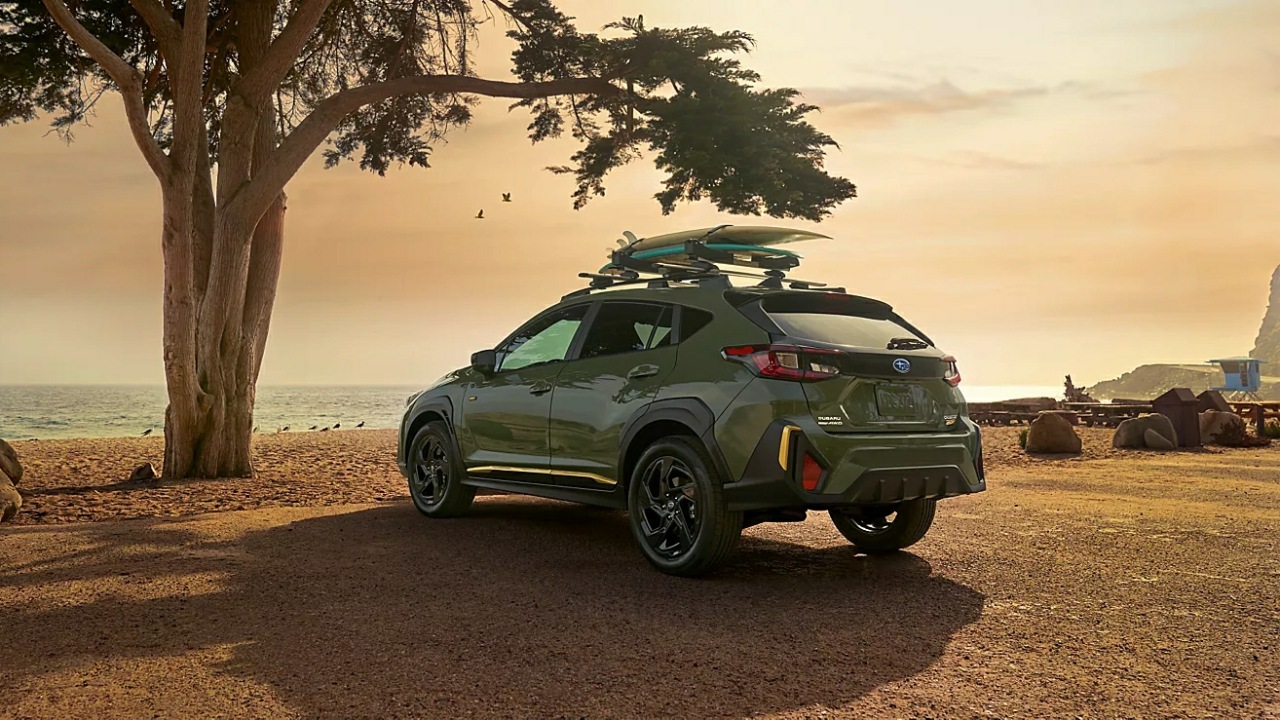
The Subaru Crosstrek received a complete overhaul for the 2024 model year, and the response has been overwhelmingly positive, with sales rising significantly from 38,502 units in Q3 of 2023. The 2025 model year brings even more upgrades, with a greater number of trims now featuring the more powerful engine as standard, boosting the appeal of this already impressive subcompact SUV.
While the base Crosstrek still comes with a somewhat underwhelming flat-four engine, the models equipped with the 2.5-liter flat-four, delivering 182 horsepower, offer a more satisfying drive. Subaru’s CVT does a good job mimicking a traditional automatic, and the standard all-wheel-drive system remains one of the best in the segment, giving the Crosstrek an edge over its competitors.
The Subaru Crosstrek is a versatile compact SUV that has carved a niche for itself in the competitive automotive market. Known for its rugged design, all-wheel-drive capabilities, and practical features, the Crosstrek is particularly appealing to outdoor enthusiasts and urban drivers alike. This review will explore the key aspects of the Crosstrek, including its design, performance, interior features, safety, and overall value.
At first glance, the Subaru Crosstrek boasts a distinctive design that reflects its adventurous spirit. The front end features Subaru’s signature hexagonal grille, complemented by sharp headlights and integrated fog lights that enhance visibility in various conditions.
The raised stance and prominent wheel arches give the Crosstrek a robust and athletic appearance. Additionally, the vehicle is available in a range of vibrant color options, allowing buyers to express their personality. The rear design includes sleek taillights and a hatchback configuration, which not only adds style but also enhances functionality and cargo accessibility.
Under the hood, the Subaru Crosstrek typically offers two engine options, depending on the trim level. The base model features a 2.0-liter four-cylinder engine that delivers 152 horsepower and 145 lb-ft of torque, providing adequate power for daily driving and highway merging. For those seeking more performance, the Crosstrek offers a more powerful 2.5-liter four-cylinder engine that produces 182 horsepower and 176 lb-ft of torque.
Both engines are paired with a continuously variable transmission (CVT), which contributes to a smooth driving experience. The Crosstrek’s symmetrical all-wheel drive system is standard across all trims, providing excellent traction and stability, particularly in adverse weather conditions or off-road scenarios. This makes the Crosstrek a capable companion for outdoor adventures, whether traversing snow-covered roads or exploring rugged terrain.
Inside, the Subaru Crosstrek prioritizes comfort and practicality. The cabin is spacious, offering ample headroom and legroom for both front and rear passengers. The rear seats can accommodate up to three passengers comfortably, making it suitable for families and groups. One of the standout features of the Crosstrek is its cargo space, which provides 20.8 cubic feet behind the rear seats and expands to a generous 55.3 cubic feet with the rear seats folded down.
This versatility allows for a range of cargo configurations, whether you’re transporting outdoor gear, groceries, or luggage for a road trip. The interior materials are of good quality, with soft-touch surfaces in key areas, while higher trims feature upscale touches like leather upholstery.
In terms of technology, the Subaru Crosstrek is equipped with a user-friendly infotainment system that enhances the driving experience. The standard 6.5-inch touchscreen display (with an optional 8-inch upgrade) includes Apple CarPlay and Android Auto compatibility, enabling seamless smartphone integration for navigation, music streaming, and hands-free communication. Bluetooth connectivity is standard, along with a four-speaker audio system that delivers satisfactory sound quality.
Higher trims offer additional features such as an upgraded audio system, navigation, and a larger touchscreen, ensuring that drivers have access to the latest technology while on the road.
Safety is a hallmark of Subaru vehicles, and the Crosstrek is no exception. It comes standard with a suite of advanced safety features known as EyeSight Driver Assist Technology, which includes adaptive cruise control, pre-collision braking, lane departure warning, and lane-keeping assist.
The Crosstrek has consistently received high safety ratings from organizations like the National Highway Traffic Safety Administration (NHTSA) and the Insurance Institute for Highway Safety (IIHS). These safety features, combined with its sturdy build and all-wheel-drive system, provide peace of mind for drivers and passengers alike, especially during long journeys or in inclement weather.
When it comes to value, the Subaru Crosstrek is competitively priced within the compact SUV segment. Its base model offers a solid array of features at an attractive price point, making it appealing for first-time buyers and those looking for a reliable vehicle.
Higher trims, while more expensive, provide additional features that enhance comfort, technology, and safety, ensuring that there’s a model to suit various needs and budgets. Subaru’s reputation for reliability and the availability of a comprehensive warranty further enhance the overall value proposition.
However, it’s important to consider some drawbacks. While the Crosstrek offers sufficient power for daily driving, some drivers may find the base engine underwhelming, especially when fully loaded or during highway merges.
Additionally, the engine can be somewhat noisy during hard acceleration, which may detract from the overall driving experience. Moreover, the infotainment system, while user-friendly, may not be as advanced or feature-rich as those found in some competitors, which could be a consideration for tech-savvy buyers.
The Subaru Crosstrek is a well-rounded compact SUV that effectively balances style, functionality, and safety. Its rugged design, capable performance, spacious interior, and advanced safety features make it an attractive option for a wide range of drivers, particularly those who enjoy outdoor activities and require a vehicle that can handle various terrains.
While it may not be the most powerful option in its class, the Crosstrek excels in providing a reliable and versatile driving experience. With its competitive pricing and array of features, the Subaru Crosstrek remains a strong contender in the compact SUV market, appealing to those who prioritize practicality and adventure.
9) Hyundai Tucson
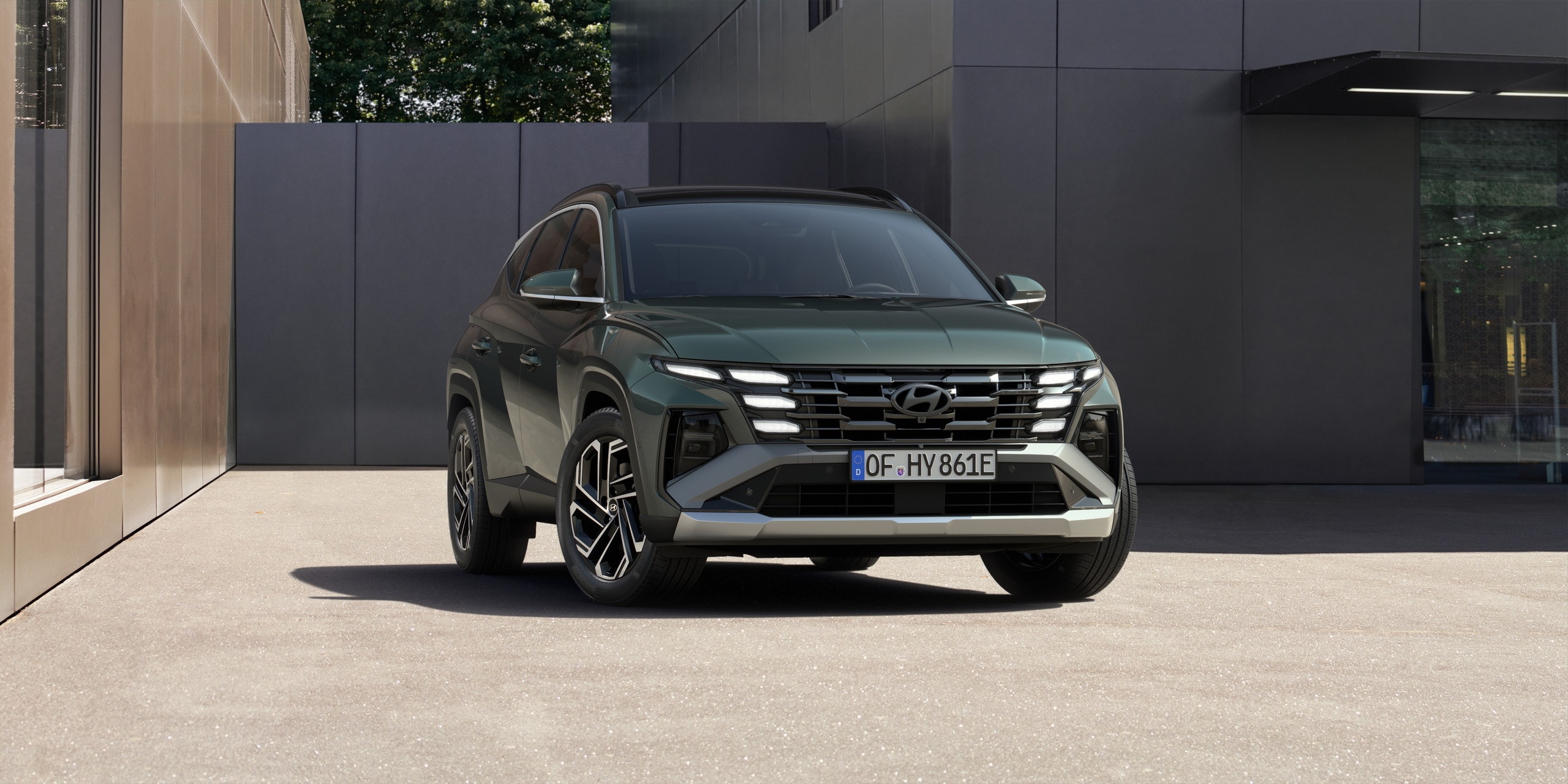
The Hyundai Tucson may not be the flashiest model in the brand’s lineup, but it certainly holds its own, ticking off plenty of important boxes. Sales for this quarter remain steady compared to Q3 of last year, but with a refreshed look for the 2025 model year, the Tucson might catch the eye of more buyers. Even so, its value as a well-rounded compact SUV is undeniable.
Designed with families in mind, the Tucson focuses on comfort and features rather than outright performance. The standard inline-four engine may not be the most spirited, but it provides more than enough power for everyday city driving. Front-wheel drive is standard, with all-wheel drive available for those who need a little extra capability.
The Hyundai Tucson is a compact SUV that has garnered significant attention in the automotive market for its blend of style, technology, and practicality. With a modern design, impressive features, and a strong emphasis on safety, the Tucson has become a popular choice for families, commuters, and anyone seeking a versatile vehicle. This review will explore the key aspects of Tucson, including its design, performance, interior features, safety, and overall value.
From the outset, the Hyundai Tucson stands out with its bold and contemporary exterior design. The front fascia features a striking grille with a distinctive pattern, complemented by sleek, jewel-like headlights that provide an upscale appearance.
The sculpted body lines and muscular stance give the Tucson an athletic profile, enhancing its appeal as a stylish yet functional SUV. Available in a range of colors, the Tucson allows buyers to express their individual tastes, making it an attractive option for those looking for a vehicle with personality. The rear of the vehicle features well-integrated taillights and a sporty rear bumper, rounding out a design that is both modern and appealing.
Under the hood, the Hyundai Tucson typically offers multiple engine options, providing buyers with choices to suit their driving preferences. The base model often comes equipped with a 2.5-liter four-cylinder engine that produces around 187 horsepower and 178 lb-ft of torque, offering a smooth and responsive driving experience for everyday use. For those seeking more performance, higher trims may feature a turbocharged 2.5-liter engine, delivering up to 281 horsepower.
The Tucson is usually paired with an eight-speed automatic transmission, ensuring seamless shifts and efficient performance. Additionally, the availability of all-wheel drive enhances traction and stability, making the Tucson a capable companion for various driving conditions, from city streets to off-road adventures. With fuel efficiency ratings typically ranging from 26 mpg in the city to 33 mpg on the highway, the Tucson remains an economical choice for those concerned about fuel costs.
Inside, the Hyundai Tucson prioritizes comfort and convenience, offering a spacious and well-designed cabin that can accommodate up to five passengers. The interior layout is intuitive, with a focus on user-friendly controls and high-quality materials. Ample headroom and legroom make for a comfortable experience, even on longer journeys.
One of Tucson’s standout features is its impressive cargo space, with around 38.7 cubic feet behind the rear seats, which expands to over 74 cubic feet when the seats are folded down. This versatility allows for various cargo configurations, whether you’re hauling sports equipment, groceries, or luggage for a family trip. Higher trim levels may feature upscale touches like leather upholstery and premium materials, further enhancing the overall interior ambiance.
In terms of technology, the Hyundai Tucson is equipped with an advanced infotainment system that enhances the driving experience. The standard setup typically includes an 8-inch touchscreen display, while higher trims may feature a larger 10.25-inch display. Both systems are compatible with Apple CarPlay and Android Auto, enabling seamless smartphone integration for navigation, music streaming, and hands-free communication.
The audio system provides quality sound and features like Bluetooth connectivity and multiple USB ports ensure that occupants can stay connected on the go. Higher trims may offer additional technology, such as navigation, a premium sound system, and wireless device charging, ensuring that Tucson remains competitive in the tech-savvy market.
Safety is a significant focus for Hyundai, and the Tucson comes equipped with a comprehensive suite of safety features. Standard safety technology typically includes forward collision warning, automatic emergency braking, lane-keeping assist, and a rearview camera. Higher trims may include additional features like blind-spot monitoring, rear cross-traffic alert, and adaptive cruise control.
The Tucson consistently earns high marks in safety tests from organizations like the National Highway Traffic Safety Administration (NHTSA) and the Insurance Institute for Highway Safety (IIHS). These advanced safety features, combined with the vehicle’s robust construction and all-wheel-drive capabilities, provide peace of mind for drivers and passengers alike.
When it comes to value, the Hyundai Tucson is competitively priced within the compact SUV segment. Its base model offers a solid array of features at an attractive price point, making it appealing for first-time buyers and those seeking a reliable vehicle. Higher trims, while more expensive, provide additional features that enhance comfort, technology, and safety, ensuring that there’s a model to suit various needs and budgets. Hyundai’s reputation for reliability and the availability of an impressive warranty further enhances the overall value proposition.
However, it’s essential to consider some drawbacks. While the Tucson offers a comfortable and smooth ride, some drivers may find the base engine’s power to be adequate but not particularly thrilling, especially when fully loaded.
The turbocharged engine option, while more powerful, may come with a higher price tag and fuel consumption that some buyers might find less appealing. Additionally, while the infotainment system is user-friendly, it may not be as intuitive or feature-rich as those found in some competitors, which could be a consideration for tech-savvy consumers.
The Hyundai Tucson is a well-rounded compact SUV that effectively balances style, functionality, and safety. Its attractive design, capable performance, spacious interior, and advanced safety features make it an excellent choice for a wide range of drivers, particularly those looking for a practical vehicle for daily commuting and family use.
While it may not be the most powerful option in its class, the Tucson excels in providing a reliable and versatile driving experience. With its competitive pricing and array of features, the Hyundai Tucson remains a strong contender in the compact SUV market, appealing to those who prioritize comfort, technology, and safety.
8) Grand Cherokee
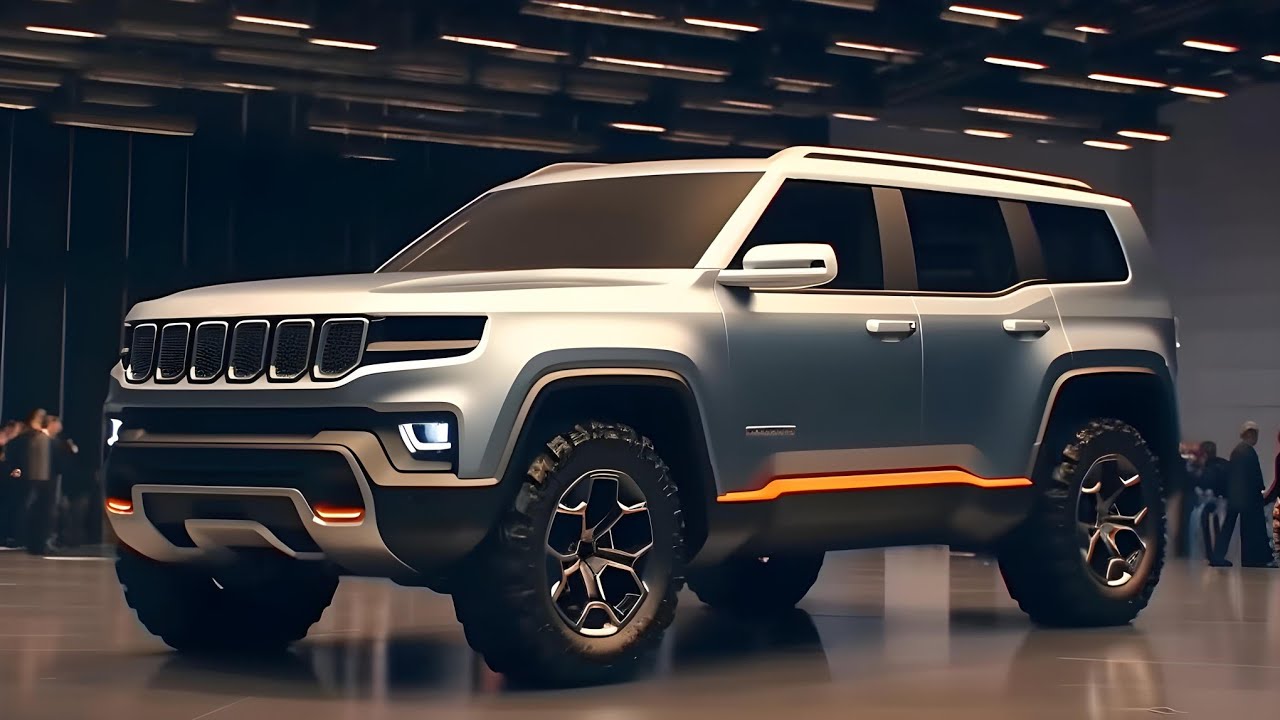
The Grand Cherokee is the first mid-size SUV on our list, and while sales have dipped slightly compared to Q3 last year, it continues to hold a strong position in the market. The 2024 Grand Cherokee is versatile, offering a range of trims that cater to different needs and driving experiences, making it a flexible choice for a variety of buyers.
Though not the quickest SUV around, its sturdy V-6 engine provides ample power for tackling off-road terrain with ease. Depending on the trim, there are several four-wheel-drive systems available, allowing for customization based on your adventure needs. The hybrid 4xe model is also an option, though it surprisingly offers less fuel efficiency than the standard versions.
The Jeep Grand Cherokee is a midsize SUV that has long been recognized for its blend of rugged capability, refined comfort, and advanced technology. Since its debut in 1992, the Grand Cherokee has evolved significantly, catering to both off-road enthusiasts and families seeking a versatile vehicle. This review explores the key aspects of the Grand Cherokee, focusing on its design, performance, interior features, safety, and overall value.
The exterior of the Jeep Grand Cherokee presents a commanding and sophisticated presence on the road. Its bold front grille, characterized by the iconic seven-slot design, is flanked by sleek headlights that incorporate LED technology, giving the SUV a modern and aggressive look. The sculpted body lines and muscular stance contribute to its rugged appeal while enhancing aerodynamics.
The Grand Cherokee is available in various trims, including the sporty Summit and the off-road-ready Trailhawk, each offering unique design elements that cater to different preferences. The rear features stylish taillights and a functional liftgate, making it easy to access the spacious cargo area. The Grand Cherokee’s overall design reflects a perfect balance between luxury and adventure, making it an attractive option for a wide range of buyers.
Under the hood, the Jeep Grand Cherokee offers a variety of engine options, allowing drivers to choose the performance that best suits their needs. The base model typically features a 3.6-liter V6 engine that produces around 293 horsepower and 260 lb-ft of torque, delivering a smooth and capable performance for everyday driving. For those seeking more power, a 5.7-liter HEMI V8 engine is available, generating 357 horsepower and 390 lb-ft of torque, making it ideal for towing and off-road adventures.
Additionally, higher trims may offer a supercharged 6.2-liter V8 engine, delivering a thrilling 707 horsepower, designed for performance enthusiasts. The Grand Cherokee is equipped with an eight-speed automatic transmission that ensures seamless shifts and contributes to improved fuel efficiency. The availability of rear-wheel drive and four-wheel drive systems enhances the Grand Cherokee’s versatility, making it suitable for various driving conditions, whether on highways or rugged terrains.
Inside, the Jeep Grand Cherokee emphasizes comfort, luxury, and technology. The cabin is spacious, with high-quality materials and an upscale design that creates an inviting atmosphere. The front seats are supportive and offer a range of adjustments, ensuring a comfortable driving position for long journeys.
The rear seats can accommodate three passengers comfortably, and the generous legroom makes it suitable for families. One of the standout features of the Grand Cherokee is its impressive cargo capacity, with approximately 36.3 cubic feet of space behind the rear seats, expanding to over 68.3 cubic feet with the rear seats folded down.
This versatility allows for various cargo configurations, making it ideal for road trips, outdoor adventures, or everyday errands. Higher trim levels may include premium materials such as leather upholstery and wood accents, further enhancing the overall luxury feel of the interior.
In terms of technology, the Jeep Grand Cherokee is equipped with an advanced infotainment system, known as the Uconnect system, which has garnered praise for its user-friendly interface. The standard setup typically features an 8.4-inch touchscreen display, while higher trims may offer a larger 10.1-inch display.
The system includes Apple CarPlay and Android Auto compatibility, allowing seamless smartphone integration for navigation, music streaming, and hands-free communication. The audio system is of high quality, with options for premium sound systems that deliver an immersive listening experience. Additional features, such as built-in navigation, multiple USB ports, and wireless charging, ensure that occupants stay connected and entertained on the road.
Safety is a critical consideration for the Jeep Grand Cherokee, and it comes equipped with a comprehensive suite of safety features. Standard safety technology typically includes a rearview camera, parking sensors, and multiple airbags. Higher trims offer advanced safety features such as adaptive cruise control, lane departure warning, blind-spot monitoring, and automatic emergency braking.
The Grand Cherokee has consistently received high safety ratings from organizations like the National Highway Traffic Safety Administration (NHTSA) and the Insurance Institute for Highway Safety (IIHS), further solidifying its reputation as a safe choice for families and individuals alike. The combination of its sturdy construction and advanced safety technologies provides peace of mind for drivers and passengers, particularly during long journeys or challenging driving conditions.
When it comes to value, the Jeep Grand Cherokee is competitively priced within the midsize SUV segment. Its base model offers a solid array of features at an attractive price point, making it appealing to a wide range of buyers.
Higher trims, while more expensive, provide additional features that enhance comfort, technology, and off-road capability, ensuring that there’s a model to suit various needs and budgets. Jeep’s reputation for reliability and the availability of an impressive warranty further enhance the overall value proposition of the Grand Cherokee.
However, it’s essential to consider some drawbacks. While the Grand Cherokee offers a comfortable and smooth ride, some drivers may find the base engine’s power adequate but not particularly thrilling, especially when fully loaded or towing heavy loads.
The larger V8 engines, while powerful, may come with a significant impact on fuel economy, which could deter some buyers. Additionally, while the infotainment system is generally intuitive, it may not be as feature-rich as those found in some competitors, which could be a consideration for tech-savvy consumers.
The Jeep Grand Cherokee is a well-rounded midsize SUV that effectively balances rugged capability, refined comfort, and advanced technology. Its commanding design, powerful engine options, spacious interior, and impressive safety features make it an excellent choice for a wide range of drivers, particularly those seeking a vehicle that can handle both daily commuting and off-road adventures.
While it may not be the most powerful option in its class, the Grand Cherokee excels in providing a reliable and versatile driving experience. With its competitive pricing and array of features, the Jeep Grand Cherokee remains a strong contender in the midsize SUV market, appealing to those who prioritize comfort, technology, and adventure.
7) Ford Explorer
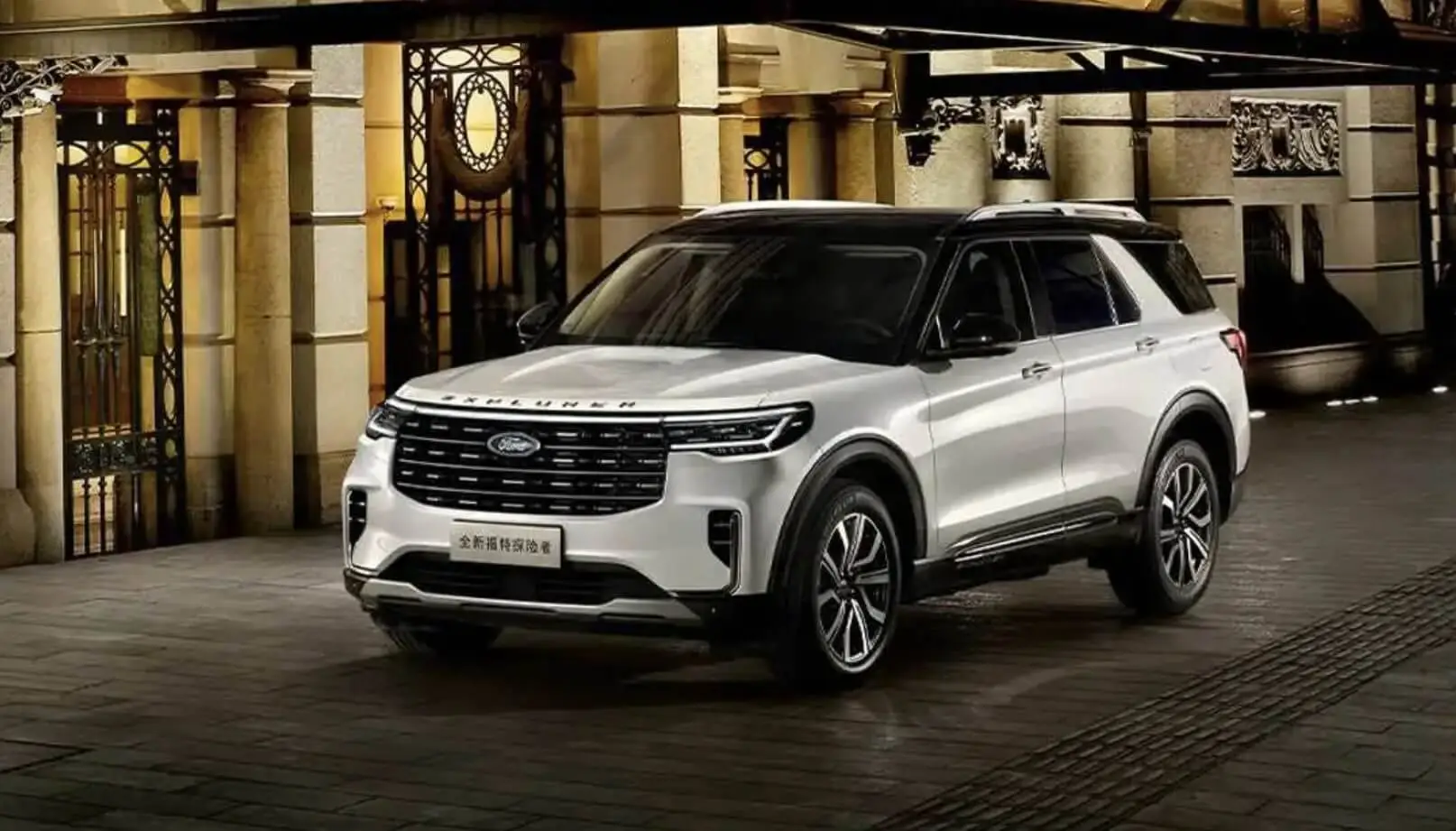
Ford secured a spot in the top ten once again with its larger mid-size SUV, the Explorer. Now entering its 2025 model year, the Explorer has received numerous updates designed to keep it competitive and appealing. Sales have surged since Q3 last year, rising from 33,709 units.
As expected for its market segment, the Explorer offers a robust powertrain lineup. The base inline-four delivers more than enough power for most drivers, but for those craving extra performance, Ford also offers the ST model, equipped with a 400-horsepower turbocharged V-6, making it a standout choice for power enthusiasts.
The Ford Explorer is a midsize SUV that has established itself as a staple in the American automotive since its debut in 1990. Known for its spacious interior, powerful engine options, and advanced technology features, the Explorer caters to families, outdoor enthusiasts, and those seeking a versatile vehicle that can handle a variety of driving conditions. This review will go into the key aspects of the Ford Explorer, including its design, performance, interior features, safety, and overall value.
The exterior of the Ford Explorer is characterized by a bold and muscular design that exudes confidence on the road. Its prominent grille, flanked by sleek headlights, gives the SUV a commanding presence, while the sculpted body lines and strong shoulders add to its athletic stance.
The Explorer is available in various trims, including the sporty ST and the luxurious Platinum, each offering unique styling elements that cater to different preferences. The rear features modern taillights and a functional liftgate, making it easy to access the spacious cargo area. With a range of color options, the Explorer allows buyers to choose a vehicle that reflects their personality and lifestyle.
Under the hood, the Ford Explorer offers a variety of engine options, catering to drivers who seek performance, efficiency, or a balance of both. The base model is typically equipped with a 2.3-liter EcoBoost four-cylinder engine that produces around 300 horsepower and 310 lb-ft of torque, providing sufficient power for daily driving and highway merging.
For those who desire more power, a 3.0-liter twin-turbo V6 engine is available in higher trims, generating an impressive 400 horsepower and 415 lb-ft of torque. This engine option is particularly well-suited for towing, making the Explorer a capable choice for those who need to haul trailers or boats. The Explorer comes standard with rear-wheel drive, while all-wheel drive is available, enhancing traction and stability in various driving conditions.
Inside, the Ford Explorer prioritizes comfort and practicality, offering a spacious cabin designed to accommodate up to seven passengers. The interior layout is intuitive, with user-friendly controls and high-quality materials that create an inviting atmosphere. The front seats are well-cushioned and supportive, while the available second-row captain’s chairs enhance comfort and accessibility for third-row passengers.
One of the standout features of the Explorer is its generous cargo space, with approximately 18.2 cubic feet behind the third row, expanding to 47.9 cubic feet with the third row folded down, and up to 87.8 cubic feet with both the second and third rows down.
This versatility allows for various cargo configurations, making it ideal for family trips, outdoor adventures, or everyday errands. Higher trim levels may feature premium materials such as leather upholstery and wood accents, further enhancing the overall luxury feel of the interior.
In terms of technology, the Ford Explorer is equipped with Ford’s SYNC 3 infotainment system, known for its intuitive interface and responsive touchscreen. The standard setup typically includes an 8-inch touchscreen display, while higher trims may offer a larger 10.1-inch vertical display.
The system supports Apple CarPlay and Android Auto, enabling seamless smartphone integration for navigation, music streaming, and hands-free communication. The audio system provides quality sound, and additional features such as multiple USB ports, wireless charging, and a Wi-Fi hotspot ensure that occupants stay connected on the go. Higher trims may also include a premium sound system and navigation, enhancing the overall driving experience.
Safety is a key focus for the Ford Explorer, and it comes equipped with a comprehensive suite of safety features designed to protect occupants. Standard safety technology typically includes a rearview camera, forward collision warning, automatic emergency braking, and blind-spot monitoring. Higher trims offer additional advanced features such as adaptive cruise control, lane-keeping assist, and rear cross-traffic alert.
The Explorer has consistently received high safety ratings from organizations like the National Highway Traffic Safety Administration (NHTSA) and the Insurance Institute for Highway Safety (IIHS), further solidifying its reputation as a safe choice for families. The combination of its sturdy construction and advanced safety technologies provides peace of mind for drivers and passengers alike, particularly during long journeys or in challenging driving conditions.
When it comes to value, the Ford Explorer is competitively priced within the midsize SUV segment. Its base model offers a solid array of features at an attractive price point, making it appealing to a wide range of buyers. Higher trims, while more expensive, provide additional features that enhance comfort, technology, and performance, ensuring that there’s a model to suit various needs and budgets. Ford’s reputation for reliability and the availability of a robust warranty further enhances the overall value proposition of the Explorer.
However, it’s essential to consider some drawbacks. While the Explorer offers a comfortable and smooth ride, some drivers may find the base engine’s power adequate but not particularly thrilling, especially when fully loaded.
The larger twin-turbo V6 engine provides impressive performance but may come with a higher price tag and fuel consumption that some buyers might find less appealing. Additionally, while the infotainment system is generally intuitive, it may not be as feature-rich as those found in some competitors, which could be a consideration for tech-savvy consumers.
The Ford Explorer is a well-rounded midsize SUV that effectively balances performance, comfort, and technology. Its bold design, powerful engine options, spacious interior, and advanced safety features make it an excellent choice for a wide range of drivers, particularly those seeking a versatile vehicle for family use or outdoor adventures.
While it may not be the most powerful option in its class, the Explorer excels in providing a reliable and accommodating driving experience. With its competitive pricing and array of features, the Ford Explorer remains a strong contender in the midsize SUV market, appealing to those who prioritize comfort, technology, and family-friendly functionality.
6) Honda CR-V

With nearly double the sales of its closest competitor, the Honda CR-V continues to assert itself as one of the top contenders for the best SUV on the market. Sales have held steady compared to Q3 of 2023, which is impressive considering the volume Honda consistently moves.
For the 2025 model year, Honda leans into the CR-V’s reputation for practicality and value, focusing on efficiency rather than performance. The inline-four engine delivers enough power to avoid feeling sluggish, though speed isn’t the CR-V’s priority. Instead, it excels in fuel efficiency. Front-wheel drive comes standard, with all-wheel drive available as an option for added versatility.
The Honda CR-V is a compact SUV that has earned a reputation for reliability, practicality, and comfort since its introduction in 1995. Renowned for its spacious interior, impressive fuel efficiency, and advanced safety features, the CR-V caters to families, commuters, and anyone seeking a versatile vehicle that can adapt to various lifestyles. This review will go into the key aspects of the Honda CR-V, including its design, performance, interior features, safety, and overall value.
The exterior design of the Honda CR-V is characterized by a sleek and modern aesthetic that appeals to a wide range of buyers. Its bold front grille, complemented by sharp LED headlights, creates a distinctive and sophisticated look. The sculpted body lines and elevated stance enhance its aerodynamic profile while providing a sense of confidence on the road.
The CR-V is available in various trims, including the sporty Sport and the luxurious Touring, each offering unique styling elements that cater to different preferences. The rear of the vehicle features contemporary taillights and a practical liftgate, providing easy access to the cargo area. The design of the CR-V strikes a balance between elegance and functionality, making it a popular choice among compact SUVs.
Under the hood, the Honda CR-V typically offers a standard 1.5-liter turbocharged four-cylinder engine that produces around 190 horsepower and 179 lb-ft of torque. This engine provides a smooth and efficient performance for everyday driving, making it an ideal choice for commuting and long road trips.
The CR-V is often paired with a continuously variable transmission (CVT), which helps optimize fuel efficiency while delivering responsive acceleration. For those seeking a hybrid option, Honda also offers a CR-V Hybrid, combining a 2.0-liter four-cylinder engine with an electric motor to deliver an impressive balance of power and fuel economy. The CR-V usually achieves fuel efficiency ratings of around 28 mpg in the city and 34 mpg on the highway, making it one of the more economical options in its class.
Inside, the Honda CR-V prioritizes comfort, practicality, and a high-quality interior. The cabin is spacious, with ample headroom and legroom for both front and rear passengers, accommodating up to five occupants comfortably. The well-designed layout features user-friendly controls and a clean dashboard, enhancing the overall driving experience.
One of the standout features of the CR-V is its exceptional cargo capacity, with approximately 39.2 cubic feet of space behind the rear seats, expanding to over 75.8 cubic feet when the rear seats are folded down. This versatility allows for various cargo configurations, making the CR-V suitable for family trips, outdoor adventures, or everyday errands. Higher trim levels may include premium materials such as leather upholstery and wood accents, further enhancing the overall luxury feel of the interior.
In terms of technology, the Honda CR-V is equipped with an intuitive infotainment system that enhances the driving experience. The standard setup typically includes a 7-inch touchscreen display, while higher trims may offer a larger 9-inch display. The system supports Apple CarPlay and Android Auto, allowing seamless smartphone integration for navigation, music streaming, and hands-free communication.
The audio system provides quality sound, and additional features such as multiple USB ports and Bluetooth connectivity ensure that occupants stay connected on the go. Higher trims may also offer navigation, a premium sound system, and wireless charging, ensuring that the CR-V remains competitive in the tech-savvy market.
Safety is a paramount focus for Honda, and the CR-V comes equipped with a comprehensive suite of safety features designed to protect occupants. Standard safety technology typically includes a rearview camera, forward collision warning, automatic emergency braking, and lane-keeping assist. Higher trims offer additional advanced features such as adaptive cruise control, blind-spot monitoring, and rear cross-traffic alert.
The CR-V consistently earns high marks in safety tests from organizations like the National Highway Traffic Safety Administration (NHTSA) and the Insurance Institute for Highway Safety (IIHS). These advanced safety features, combined with the vehicle’s robust construction, provide peace of mind for drivers and passengers alike, particularly during long journeys or in challenging driving conditions.
When it comes to value, the Honda CR-V is competitively priced within the compact SUV segment. Its base model offers a solid array of features at an attractive price point, making it appealing for first-time buyers and those seeking a reliable vehicle. Higher trims, while more expensive, provide additional features that enhance comfort, technology, and safety, ensuring that there’s a model to suit various needs and budgets. Honda’s reputation for reliability and the availability of a strong warranty further enhances the overall value proposition.
However, it’s essential to consider some drawbacks. While the CR-V offers a comfortable and smooth ride, some drivers may find the engine’s performance adequate but not particularly thrilling, especially when fully loaded or during rapid acceleration. The hybrid option, while efficient, may come at a higher price point, which could deter budget-conscious buyers. Additionally, while the infotainment system is generally user-friendly, some users may find it less intuitive than competing systems, which could be a consideration for tech-savvy consumers.
The Honda CR-V is a well-rounded compact SUV that effectively balances practicality, comfort, and technology. Its attractive design, efficient engine options, spacious interior, and advanced safety features make it an excellent choice for a wide range of drivers, particularly those seeking a family-friendly vehicle for daily use.
While it may not be the most powerful option in its class, the CR-V excels in providing a reliable and versatile driving experience. With its competitive pricing and array of features, the Honda CR-V remains a strong contender in the compact SUV market, appealing to those who prioritize comfort, technology, and reliability.
5) Toyota RAV4
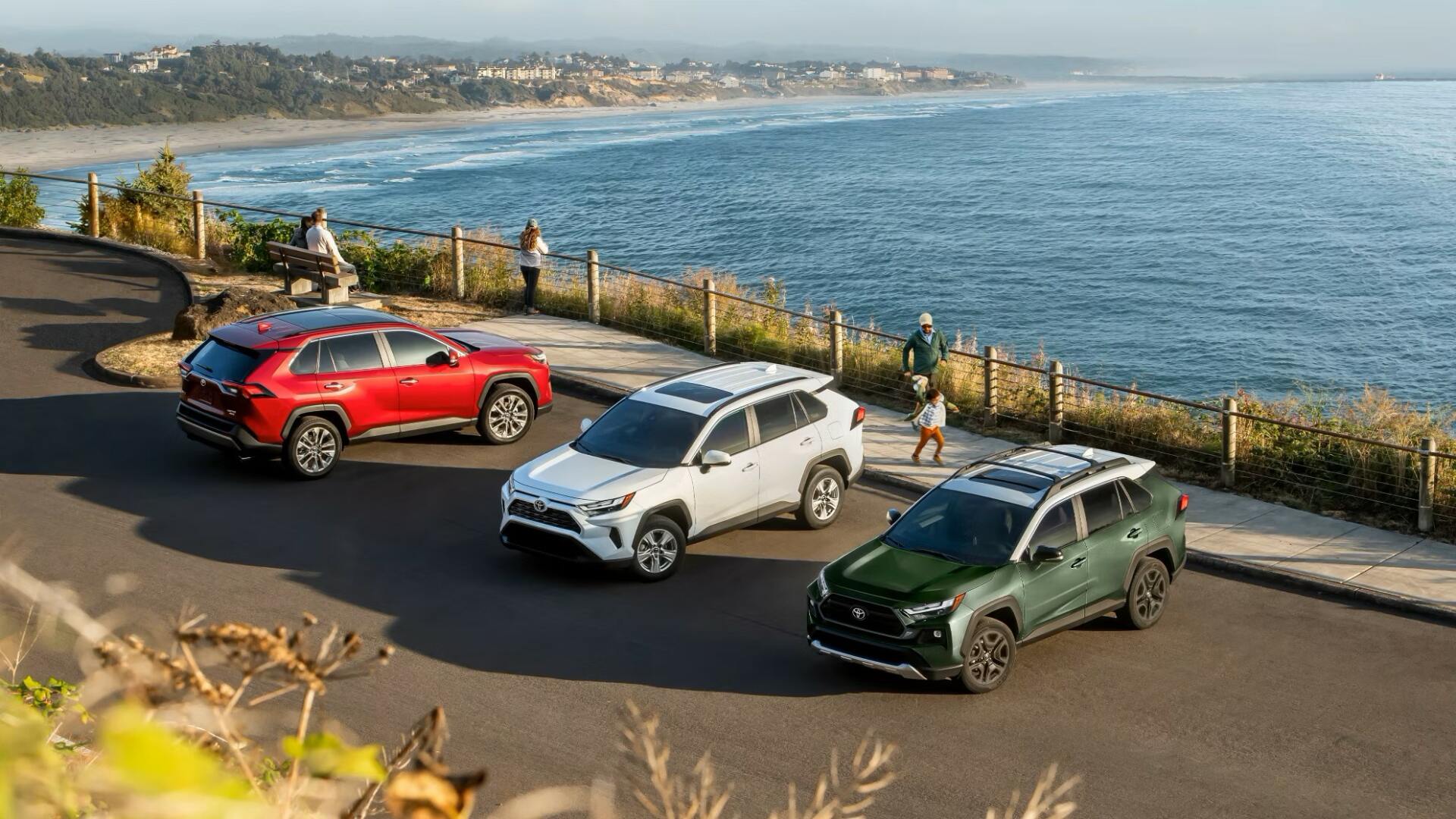
A few things in life are certain: death, taxes, and the Toyota RAV4 reigning as the most popular SUV on the market. Despite facing fierce competition, the RAV4 has consistently ranked among the best-selling vehicles on the road. This trend continues in Q3 2024, although the CR-V is closing the gap. Sales have dipped by 10,000 units compared to last year, indicating that it might be time for Toyota to consider some updates.
Toyota prioritizes efficiency and reliability in its powertrains, and this is evident in the inline-four engine powering the RAV4. Front-wheel drive is standard across the board, while all-wheel drive is an option available for all models. Additionally, Toyota offers a hybrid and a plug-in hybrid version of the RAV4, both of which have gained significant popularity among eco-conscious consumers.
The Toyota RAV4 is a compact SUV that has become one of the best-selling vehicles in its segment since its introduction in 1994. Known for its reliability, versatility, and fuel efficiency, the RAV4 appeals to a broad audience, including families, commuters, and adventure seekers. This review will explore the key aspects of the Toyota RAV4, including its design, performance, interior features, safety, and overall value.
The exterior of the Toyota RAV4 showcases a bold and rugged design that reflects its capability and adventurous spirit. The front fascia features a prominent grille flanked by aggressive LED headlights, giving the SUV a confident and modern appearance.
The sculpted body lines and muscular stance enhance the RAV4’s sporty profile, while available features such as roof rails and an optional rugged trim emphasize its off-road potential. The rear of the vehicle includes stylish taillights and a convenient liftgate, providing easy access to the cargo area. With various color options and trims, including the sporty RAV4 Adventure and the luxurious RAV4 Limited, buyers can choose a configuration that fits their style and lifestyle.
Under the hood, the Toyota RAV4 typically comes equipped with a 2.5-liter four-cylinder engine that produces around 203 horsepower and 184 lb-ft of torque. This engine delivers a smooth and capable performance, making it suitable for both daily commuting and longer road trips. The RAV4 is paired with an eight-speed automatic transmission that provides responsive shifts and contributes to the vehicle’s overall efficiency.
For those seeking a more environmentally friendly option, the RAV4 Hybrid is also available, combining a gasoline engine with electric motors to offer improved fuel efficiency without sacrificing performance. The hybrid model typically achieves an impressive 41 mpg in the city and 38 mpg on the highway, making it one of the most economical options in its class.
Inside, the Toyota RAV4 emphasizes comfort, practicality, and a high-quality interior. The cabin is spacious, providing ample headroom and legroom for both front and rear passengers. The well-designed layout features intuitive controls and high-quality materials, creating an inviting atmosphere.
One of the standout features of the RAV4 is its generous cargo capacity, with approximately 37.6 cubic feet of space behind the rear seats, expanding to 69.8 cubic feet with the seats folded down. This versatility allows for various cargo configurations, making the RAV4 suitable for family trips, outdoor adventures, or everyday errands. Higher trim levels may include premium materials such as leather upholstery, soft-touch surfaces, and wood accents, enhancing the overall luxury feel of the interior.
In terms of technology, the Toyota RAV4 is equipped with the latest infotainment system, known as Toyota’s Multimedia System. The standard setup typically includes a 7-inch touchscreen display, while higher trims may offer an 8-inch display. The system supports Apple CarPlay and Android Auto, enabling seamless smartphone integration for navigation, music streaming, and hands-free communication.
The audio system provides quality sound, and additional features such as multiple USB ports, Bluetooth connectivity, and available Wi-Fi hotspots ensure that occupants stay connected on the go. Higher trims may also offer premium audio systems, built-in navigation, and wireless charging, ensuring that the RAV4 remains competitive in the tech-savvy market.
Safety is a paramount focus for Toyota, and the RAV4 comes equipped with a comprehensive suite of safety features designed to protect occupants. Standard safety technology typically includes a rearview camera, forward collision warning, automatic emergency braking, and lane departure alert. Higher trims offer additional advanced features such as adaptive cruise control, blind-spot monitoring, and rear cross-traffic alert.
The RAV4 consistently earns high safety ratings from organizations like the National Highway Traffic Safety Administration (NHTSA) and the Insurance Institute for Highway Safety (IIHS). These advanced safety features, combined with the vehicle’s robust construction, provide peace of mind for drivers and passengers alike, particularly during long journeys or in challenging driving conditions.
When it comes to value, the Toyota RAV4 is competitively priced within the compact SUV segment. Its base model offers a solid array of features at an attractive price point, making it appealing for first-time buyers and those seeking a reliable vehicle.
Higher trims, while more expensive, provide additional features that enhance comfort, technology, and safety, ensuring that there’s a model to suit various needs and budgets. Toyota’s reputation for reliability and the availability of a strong warranty further enhance the overall value proposition of the RAV4.
However, it’s essential to consider some drawbacks. While the RAV4 offers a comfortable and smooth ride, some drivers may find the engine’s performance adequate but not particularly exhilarating, especially during rapid acceleration or when fully loaded.
The hybrid option, while efficient, may come at a higher price point, which could deter budget-conscious buyers. Additionally, while the infotainment system is generally user-friendly, some users may find the interface slightly less intuitive than competitors, which could be a consideration for tech-savvy consumers.
The Toyota RAV4 is a well-rounded compact SUV that effectively balances reliability, comfort, and technology. Its attractive design, efficient engine options, spacious interior, and advanced safety features make it an excellent choice for a wide range of drivers, particularly those seeking a family-friendly vehicle for daily use.
While it may not be the most powerful option in its class, the RAV4 excels in providing a dependable and versatile driving experience. With its competitive pricing and array of features, the Toyota RAV4 remains a strong contender in the compact SUV market, appealing to those who prioritize comfort, technology, and long-term reliability.
4) Ford Escape
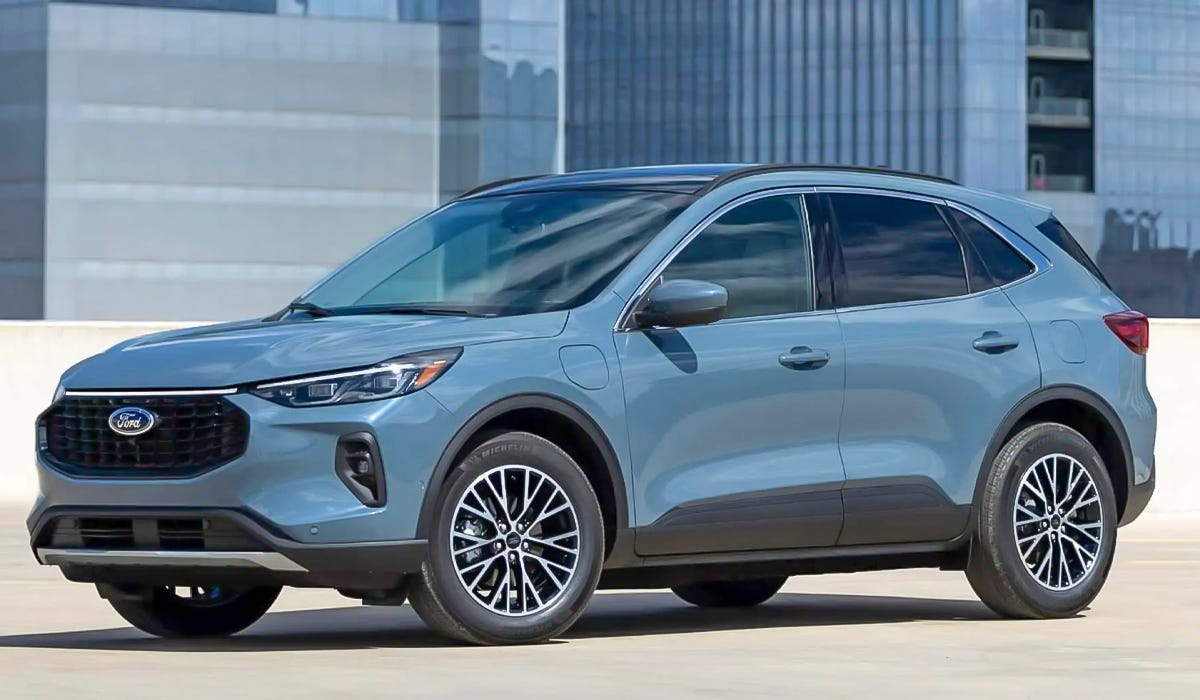
Entering its 2025 model year, the Ford Escape continues to be a strong contender in the compact SUV market. While its rugged cousin, the Bronco Sport, is built for off-road adventures, the Escape is tailored for city streets, offering a smoother and more urban-friendly drive. In 2023, Ford moved 38,774 units of the Escape, marking a solid sales uptick.
For 2025, the Escape comes with three engine options: two gas engines and a hybrid. The standard three-cylinder engine provides respectable performance, but for drivers craving extra power, the available 2.0-liter turbocharged inline-four delivers 250 horsepower. Both engine choices offer a good balance of power and fuel efficiency.
3) Nissan Rogue
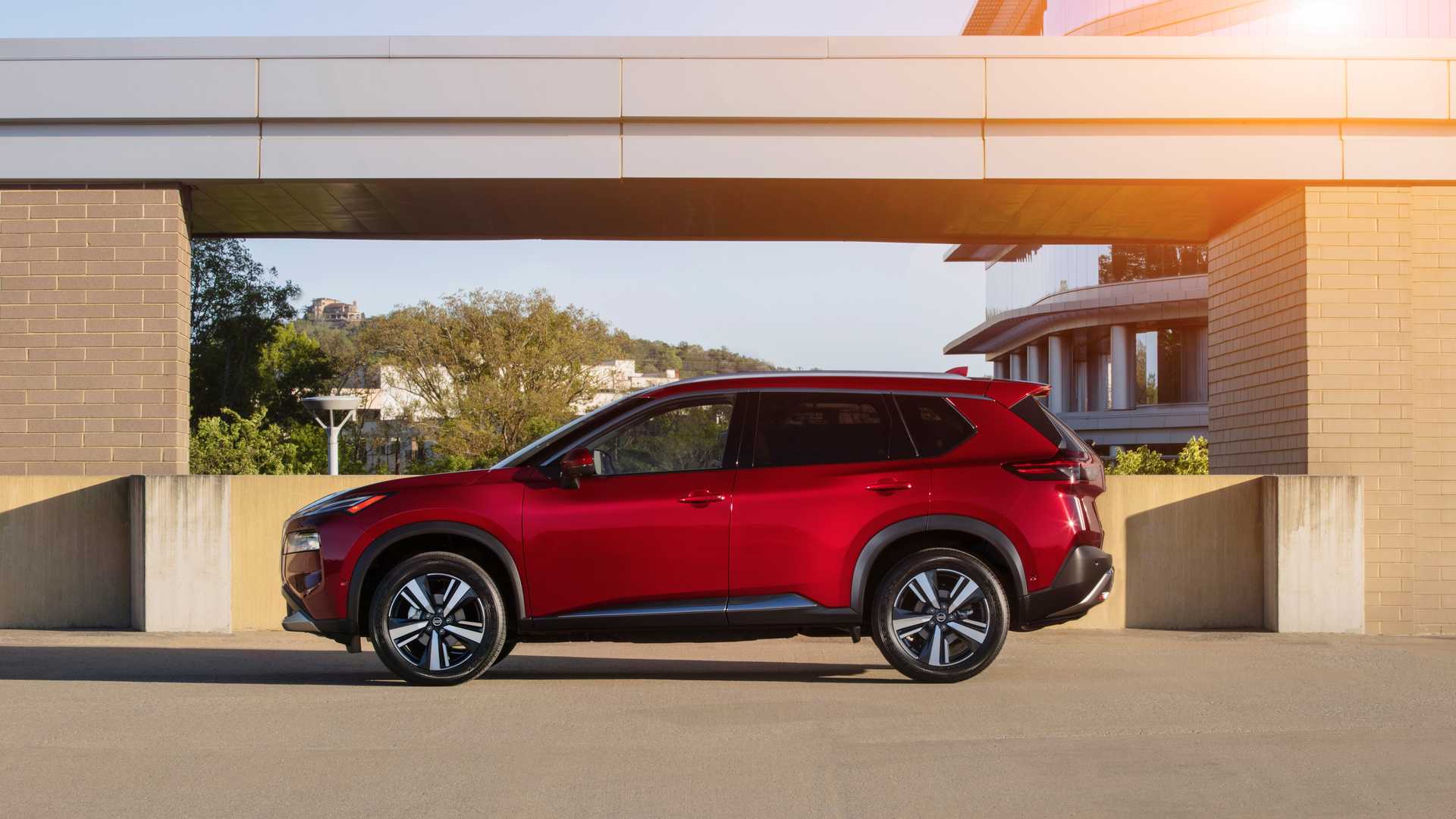
Nissan often flies under the radar, but it consistently produces some of the most reliable vehicles on the road. The Rogue, a standout in the compact SUV segment, is a perfect example of this. Now in its 2025 model year, the Rogue has received several upgrades, including the addition of the new off-road-oriented Rock Creek model. Despite its strong performance in sales this quarter, Nissan saw a dip compared to 2023, when the Rogue sold 63,345 units.
Every Rogue model is powered by a single engine option, a surprisingly capable inline-three that packs more punch than you might expect. Paired with a smooth continuously variable transmission (CVT), the Rogue offers front-wheel drive as standard, with all-wheel drive available for those seeking extra traction and versatility.
2) Ford Bronco Sport
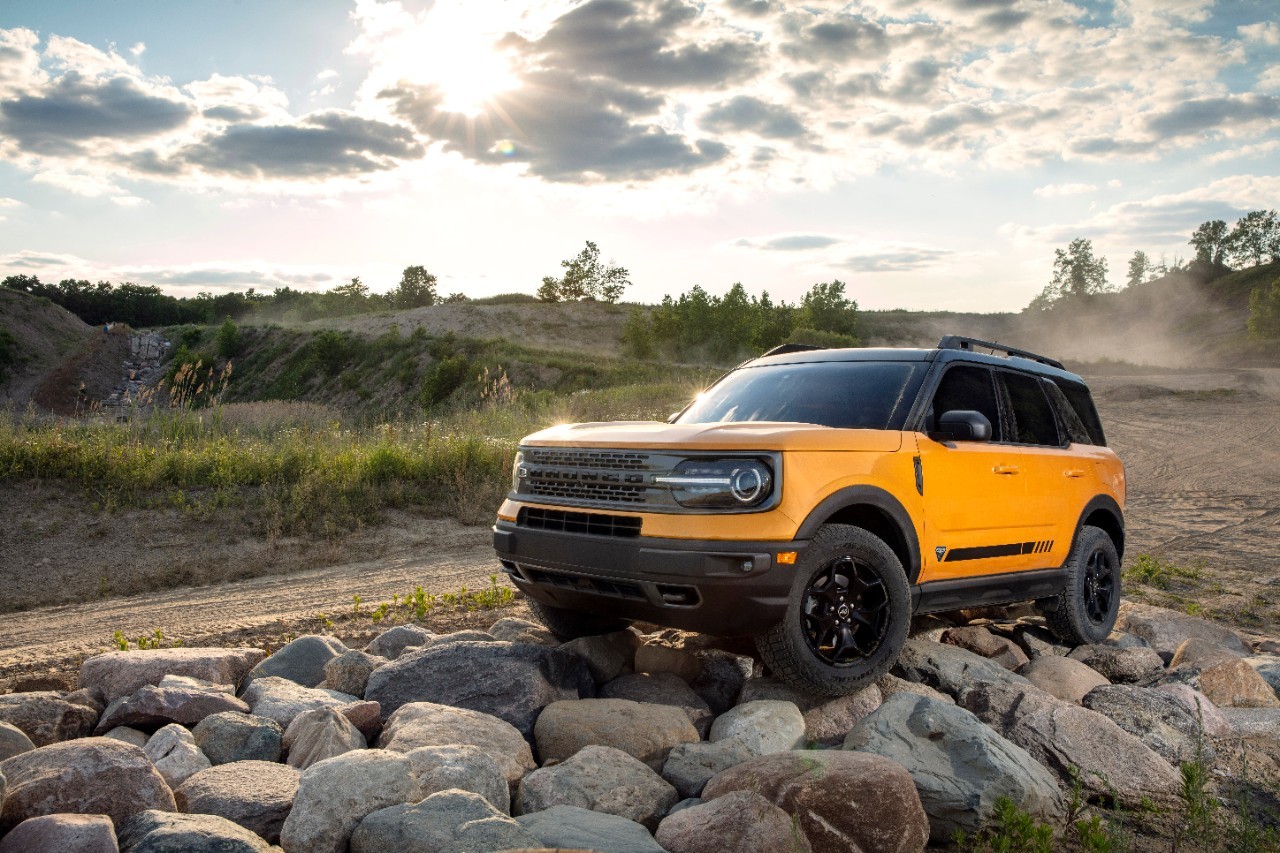
The compact version of Ford’s iconic Bronco, the Bronco Sport, has had a strong quarter, with sales climbing from last year’s 33,232 units. If you’re in the market for a small SUV that can genuinely handle off-road trails, the Bronco Sport is a standout choice. As the 2025 models roll out, this SUV continues to offer both practicality for everyday driving and ruggedness for weekend adventures.
While the base engine may fall short of some expectations, the available 2.0-liter turbocharged four-cylinder with 238 horsepower more than makes up for it. Every Bronco Sport comes equipped with an eight-speed automatic transmission and all-wheel drive, ensuring solid performance on any terrain.
1) Chevrolet Trax
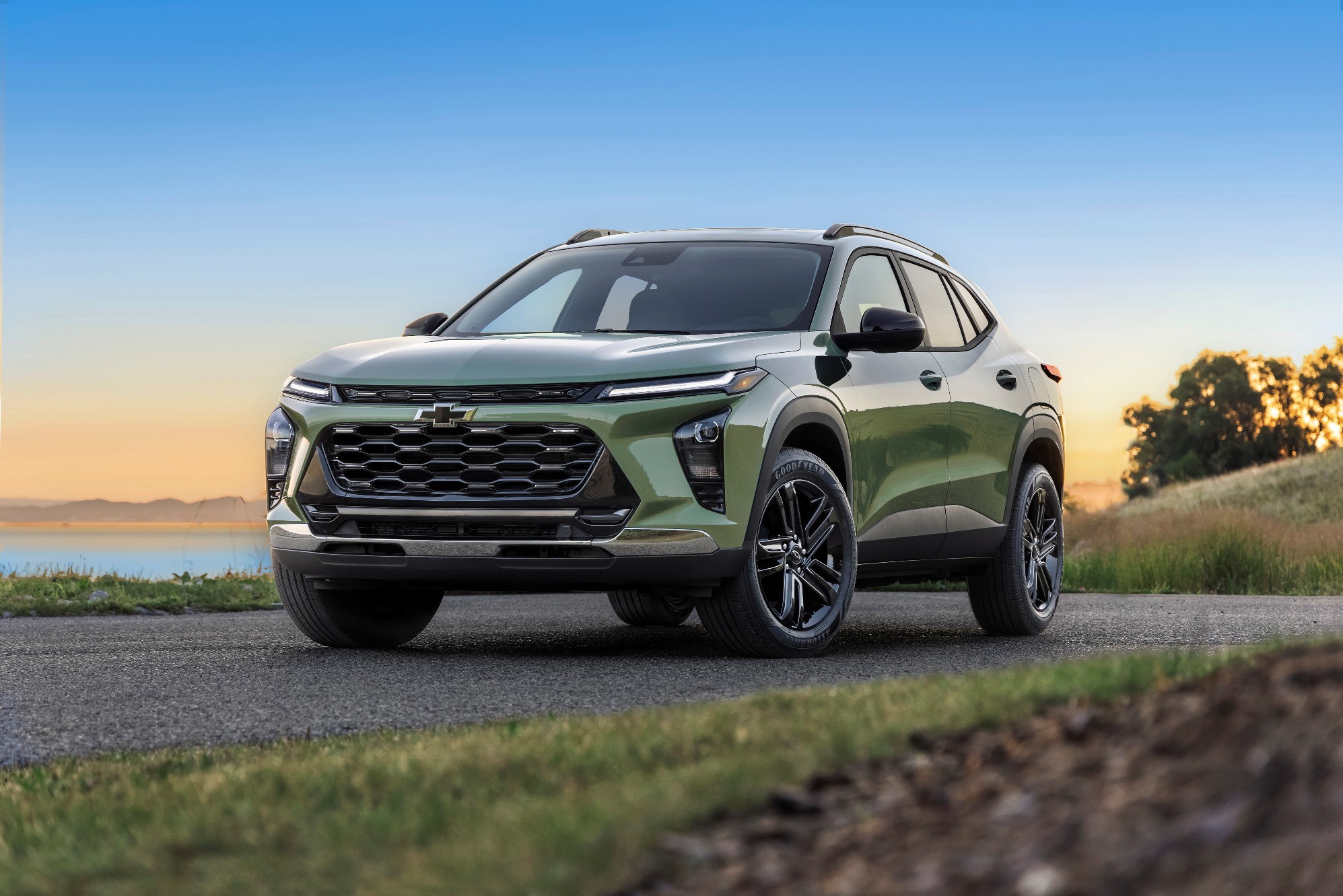
The subcompact SUV segment is one you simply can’t overlook, and the Chevrolet Trax is a shining example of why. With an impressive amount of standard features, a fun driving experience, and a starting price of just $20,400, it’s easy to see why the Trax has seen a sales boost of over 22,000 units compared to Q3 of 2023.
While the Trax may not be a performance powerhouse, its turbocharged engine pairs well with its lightweight frame, offering enough punch to feel lively without being sluggish. Front-wheel drive is the only option available, along with a six-speed automatic transmission, which rounds out this subcompact’s practical and affordable package.
The Chevrolet Trax is a compact crossover SUV that has made its mark in the automotive market since its introduction. With a design aimed at blending practicality, efficiency, and modern technology, the Trax caters to a diverse audience, from urban commuters to small families. This review goes into the details of the Trax, focusing on its design, performance, interior features, safety, and overall value.
At first glance, the Chevrolet Trax showcases a contemporary design that reflects Chevy’s modern styling cues. The front end features a bold grille with the iconic Chevrolet bowtie emblem at its center, flanked by sleek headlights that incorporate LED daytime running lights.
The sculpted body lines add a touch of sophistication while contributing to the vehicle’s aerodynamic efficiency. The overall profile is compact yet sporty, making it easy to maneuver through crowded city streets and tight parking spaces. The rear design is equally appealing, with stylish taillights and a hatchback configuration that enhances functionality. Available in multiple color options, the Trax allows buyers to personalize their vehicles according to their tastes.
Under the hood, the Chevrolet Trax offers a single engine option, a turbocharged 1.4-liter four-cylinder that delivers a commendable balance of power and efficiency. This engine produces 155 horsepower and 177 lb-ft of torque, providing adequate performance for daily driving and highway merging. The Trax is equipped with a six-speed automatic transmission, which shifts smoothly and contributes to an enjoyable driving experience.
While the Trax is not a performance SUV, it handles well, with a suspension that strikes a balance between comfort and responsiveness. The front-wheel-drive configuration is standard, while an all-wheel-drive option is available for those who require enhanced traction in various driving conditions. The fuel efficiency of the Trax is another highlight, with an EPA rating of approximately 24 mpg in the city and 32 mpg on the highway, making it a practical choice for those concerned about fuel costs.
The interior of the Chevrolet Trax is designed with both comfort and functionality in mind. The cabin is spacious for a compact SUV, with ample headroom and legroom for both front and rear passengers. The rear seats can accommodate up to three passengers comfortably, making it suitable for small families or groups.
The cargo space is another standout feature, with 18.7 cubic feet of space behind the rear seats, which expands to 48.4 cubic feet when the rear seats are folded down. This flexibility allows for a variety of cargo configurations, whether you’re transporting groceries, sports equipment, or luggage for a weekend getaway. The interior materials are of decent quality, with soft-touch surfaces in key areas, though some hard plastics are present, which is common in this segment.
In terms of technology, the Chevrolet Trax is well-equipped, featuring a user-friendly infotainment system. The standard 7-inch touchscreen display is compatible with Apple CarPlay and Android Auto, allowing seamless integration of smartphones for navigation, music streaming, and hands-free communication.
Bluetooth connectivity is standard, along with a six-speaker audio system that delivers decent sound quality. Higher trims offer additional features such as an upgraded audio system, a larger 8-inch touchscreen, and built-in navigation. The controls are intuitive and easily accessible, ensuring that drivers can stay focused on the road without distractions.
Safety is a crucial consideration for any vehicle, and the Chevrolet Trax does not disappoint in this area. It comes equipped with a range of standard safety features, including a rearview camera, stability control, and a suite of airbags.
Higher trims offer advanced safety technologies such as forward collision alert, lane departure warning, and rear parking sensors. The Trax has performed well in crash tests, earning respectable ratings from organizations like the National Highway Traffic Safety Administration (NHTSA) and the Insurance Institute for Highway Safety (IIHS). These safety features, combined with its compact size and maneuverability, make the Trax a confident choice for urban driving and family use.
In terms of value, the Chevrolet Trax is competitively priced within the compact SUV segment. Its base model offers a solid array of features at an attractive price point, making it an appealing option for first-time buyers or those looking for an affordable vehicle.
The higher trims, while more expensive, provide additional features that enhance comfort, technology, and safety, ensuring that there’s a model to suit various needs and budgets. Moreover, Chevrolet’s reputation for reliability and the availability of a comprehensive warranty add to the overall value proposition.
However, it’s essential to consider some drawbacks. While the Trax offers adequate power for everyday driving, it may feel underpowered for those seeking a more dynamic driving experience, especially when fully loaded. The engine’s turbo lag can be noticeable during quick accelerations, which might be a concern for some drivers.
Additionally, the compact size, while advantageous for city driving, can limit rear-seat legroom compared to larger SUVs, making it less ideal for those who frequently transport taller passengers. Furthermore, while the infotainment system is user-friendly, some competitors offer more advanced features and larger screens, which may appeal to tech-savvy buyers.
The Chevrolet Trax is a commendable compact crossover SUV that balances style, functionality, and technology. Its attractive design, efficient performance, spacious interior, and safety features make it a solid choice for a variety of drivers, particularly those seeking a practical and economical vehicle for urban living.
While it may not be the most powerful option in its class, the Trax delivers on many fronts, making it a well-rounded choice for individuals and small families. With its competitive pricing and range of features, the Chevrolet Trax remains a worthy contender in the compact SUV market, appealing to those who prioritize practicality and efficiency without sacrificing modern conveniences.

